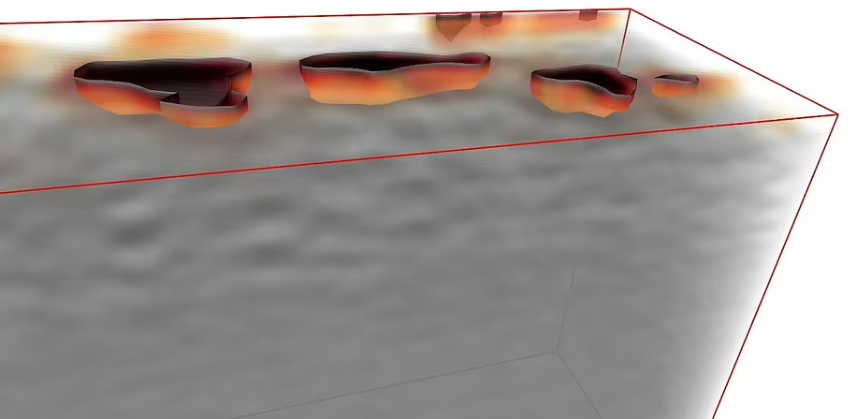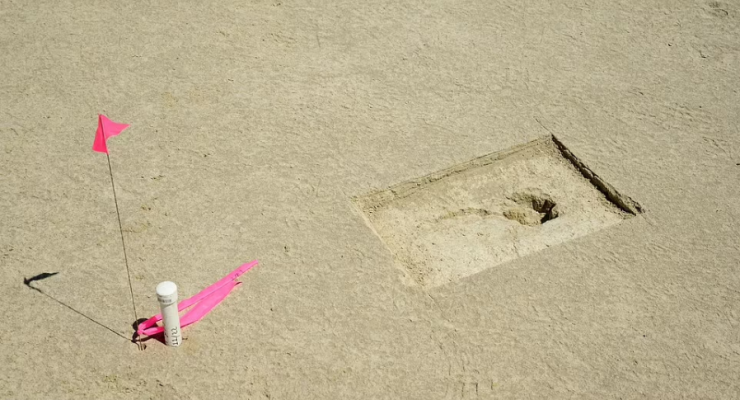Cornell University researcher Thomas Urban uncovered human footprints believed to date from the end of the last ice age on the salt flats of the Air Force’s Utah Testing and Training Range (UTTR) in research.
Urban and Daron Duke, of Far Western Anthropological Research Group, were driving to an archaeological hearth site at UTTR when spotted what appeared to be “ghost tracks”
Urban came to a halt, and as soon as he did, he recognized a familiar sight: unshod human footprints, similar to the ones he had studied at White Sands National Park, where the earliest discovered human footprints that trod the Americas were discovered.
“It was a completely accidental find,” said Urban, a research scientist with the Cornell Tree Ring Laboratory and the College of Arts and Sciences. On the Utah Test and Training Range, footprint was noted with a pin flag.
The team returned the following day to begin cataloguing the prints, and Urban surveyed one of the two discernible trackways using ground-penetrating radar. Because Urban had already refined the use of geophysical methods like radar for photographing footprints at White Sands, he was able to discover the secret rapidly. “We found a lot more invisible prints using radar.”
Duke examined a portion of the prints, establishing both their barefoot status and the existence of undiscovered prints. A total of 88 footprints, including those of adults and children, were found, providing information about family life throughout the Pleistocene.



According to Duke, “based on excavations of various prints, we’ve identified evidence of individuals with children from between five to 12 years of age who were leaving bare footprints. People seem to have been strolling in shallow water since the sand quickly filled in their footprints behind them, much like you might see on a beach. However, there was a layer of muck beneath the sand that prevented the print from disappearing completely.” More study is being conducted to confirm the discovery.
Duke believes the prints are more than 12,000 years old since there haven’t been any wetland conditions in at least 10,000 years that could have produced such footprint traces in this isolated section of the Great Salt Lake desert.
According to the news of PHYS, Urban was working at Duke’s request after discovering two open-air hearths in the UTTR that dated back to the end of the Ice Age. Duke discovered the oldest evidence of human tobacco usage at one of these hearth locations. The newly discovered footprints were nearly a half-mile away from those hearths.
In fact, according to Urban, the site has a wider significance. Despite being less ancient and possibly less extensive than White Sands, believes there may be a lot more to be discovered at the Utah site.
